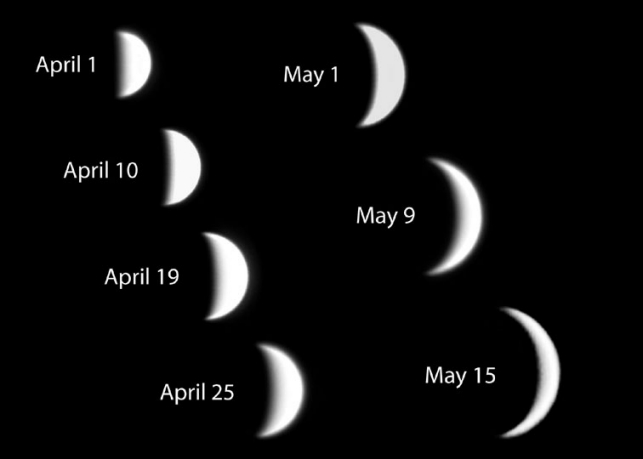Credit & Copyright: John
Rummel
Explanation:
Venus is currently
falling out of the
western evening sky.
Second planet from the Sun and
third brightest celestial object after the Sun and Moon,
Venus has been appreciated by casual sky gazers as a brilliant beacon
above the horizon after sunset.
But telescopic
images have also revealed its dramatic phases.
In fact, this thoughtful composite of
telescopic views nicely illustrates the
progression of phases
and increase in apparent size undergone by Venus over
the past few weeks.
Gliding along its interior orbit, Venus has been
catching up with planet Earth, growing larger as it draws
near.
At the same time, just as the Moon goes
through phases,
Venus' visible sunlit hemisphere has presented an
increasingly slender, crescent shape.
Now sharing the sky with a crescent Moon, on
June 8th Venus
will actually cross the face of the Sun, the first such
transit since 1882.
1999 2000 2001 2002 2003 2004 2005 2006 2007 2008 2009 2010 2011 2012 2013 2014 2015 2016 2017 2018 2019 2020 2021 2022 2023 2024 2025 |
Yanvar' Fevral' Mart Aprel' Mai Iyun' Iyul' Avgust Sentyabr' Oktyabr' Noyabr' Dekabr' |
NASA Web Site Statements, Warnings, and Disclaimers
NASA Official: Jay Norris. Specific rights apply.
A service of: LHEA at NASA / GSFC
& Michigan Tech. U.
|
Publikacii s klyuchevymi slovami:
Venus - phases - transit - Prohozhdenie - Venera
Publikacii so slovami: Venus - phases - transit - Prohozhdenie - Venera | |
Sm. takzhe:
Vse publikacii na tu zhe temu >> | |
